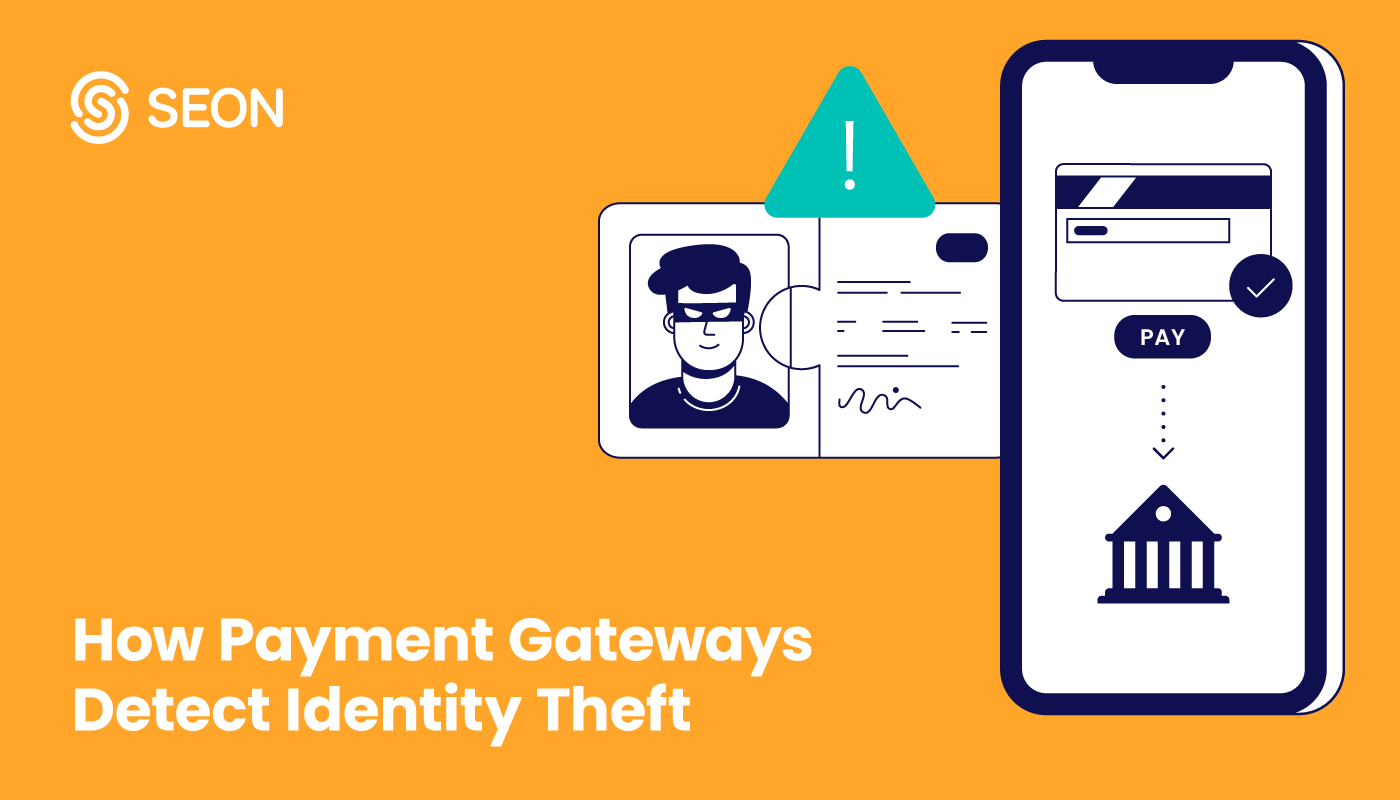FedNow, the instant payment service that launched in the US on July 20, 2023, could bring significant new developments to your organization.
We look at what it is and how you can prepare for the changes that could come to your business as a result of its introduction.
What Is FedNow?
Launched on July 20, 2023, the FedNow Service is an instant payment system created by the Federal Reserve for American households and businesses. It offers the ability to utilize instant payment services to customers of any sized bank and credit union.
The customers of such financial institutions can use their institution’s app or website to send instant payments directly from their bank accounts.
According to the Federal Reserve’s FAQs page, the system is secure and can carry out transactions within seconds on a 24/7 basis, any day of the year.
The Federal Reserve has always allowed financial institutions to send and receive funds – including bill and vendor payments, deposits, and wire transfers – to one another on behalf of their customers. However, the significance of the FedNow payment system is that this modernized, real-time system can now operate alongside these once-slower transactions.
What Is FedNow Replacing?
FedNow is not officially replacing anything, and certainly hasn’t been designed to do so. Yet as an increasing number of organizations adopt FedNow, it is possible that new users will find that they no longer use their current payment system.
Put another way, FedNow is a new technology that hasn’t been created with the express purpose of replacing any existing payment systems but it may become a more popular choice for transactions. As such, it may overshadow older, less convenient financial technologies, though it won’t outright replace them.
[email_ip_phone_lookup]How Does FedNow Work?
FedNow works by offering banks, credit unions, and other organizations such as retailers a system where they can utilize instant payment services that go through this core process:
- The payer (e.g. an employer paying an employee their wages) uses an app provided by their credit union to request the desired payment.
- The bank of the soon-to-be-paid employee sends back a request for payment (RFP) via the FedNow Service for the payer to confirm the transaction on their app.
- The payer approves, then their credit union screens the payment and sends a payment message through the FedLine network.
- This payment message either goes directly to the FedNow Service or via a service provider. In any event, the message follows the ISO 20022 standard, which according to the Federal Reserve will bring “interoperability, end-to-end efficiency of payments, and future innovation” to the FedNow Service.
- FedNow immediately carries out a validation process on the payment message before passing it to the payer’s bank. That bank confirms its willingness to accept the payer’s outgoing payment.
- The FedNow Service debits and credits the respective financial organizations (in this example, these organizations are the payer’s credit union and the payee’s financial institution).
- The FedNow Service sends a payment message (namely advice of credit) to the payer’s bank and credit union to confirm the success of the payment.
- The payer’s bank credits the payee’s account, which then makes the funds available to the latter.
- It’s then optional for the payer’s bank to send final confirmation of the transaction to the payer’s credit union. Doing so is ideal as the payer can then not only know that the outgoing payment was transmitted but received by the payee.
While the specific use of FedNow will vary depending on the nature of the payer and the financial institutions involved, the above example provides the core activities involved in using FedNow.
To recap: It starts with the payer requesting a payment, goes through a screening and validation process, and culminates in FedNow debiting and crediting the payer and payee’s respective financial organizations.
Leverage unique digital footprinting and robust device fingerprinting in real-time to spot risky users and stay safe and compliant, without false positives.
Ask an Expert
What Are the Pros and Cons of FedNow?
A payment system as fast as FedNow has good points (such as convenience) and bad points (fraud risk and data vulnerability concerns). Let’s take a look at the pros and cons of this real-time payment system.
Pros
- Convenience: With FedNow, users will never have to wait until their bank’s next working day before they can send or receive a transaction.
- Reductions in delays and friction: While FedNow users will have to register and answer questions when they first use the system, the transaction validation process will ultimately be a simple “Do you accept this transaction?” check.
- Centralized security: Because the financial system is always overlooked by FedNow and carried out over its network known as FedLine, users will have the peace of mind of knowing which organization to turn to if fraud or other cybersecurity concerns arise.
- Limited time for hackers to intercept transactions: As a real-time payment system, there is a very limited window in which hackers can attempt to defraud a transaction.
- Potential for increased return on investment (ROI): According to the Federal Reserve, the efficiency of FedNow may ensure businesses attract and retain new customers, and the automation it offers will reduce operational expenditure.
As is typical of a fast and centralized system, FedNow is a double-edged sword. On one hand, it is convenient and able to reduce both security friction and the customer queries and hacking attempts that would otherwise come with it.
On the other hand, a fast and centralized system can also be a vulnerability, because there is little to no time to revise suspicious transactions. In addition, only one main organization’s system and network can be approached in the event of fraud, hacking attempts, and/or system or user errors. In fact, the transactions themselves are irrevocable. Let’s take a closer look at these downsides.
Cons
There’s no such thing as a perfect system – especially when you look at a payment interface – so let’s now focus on the potential pitfalls of FedNow.
- Payments are irreversible: Once transactions are made with FedNow, there is no going back. This makes human error and buyer remorse harder – potentially impossible – to relieve after a transaction is made.
- New fraud risks: New technology gives rise to new vehicles for attack, and FedNow’s systems will be no different. In fact, phishing attacks may become even more prevalent as FedNow rises in popularity. That’s because scammers will know that the fast and permanent nature of FedNow payments will mean that one fleeting lapse of judgment could mean an account holder loses their money to a simple trick.
- New customer complaints and queries: FedNow will only be available to organizations that agree to use it. As such, there will be no guarantee that it will work for everyone that wishes to use it. This may lead to a transitional time of confusion and inconsistency before the uptake of FedNow and the migration from older systems begins to take shape. Many questions and concerns could arise during this period.
- No cross-border payments: FedNow is not able to make transactions across borders, which will mean limited functionality outside of local exchanges. The Federal Reserve has emphasized its interest in resolving this limitation as the system grows, however.
- New operational and financial demands: While the efficiency and convenience of FedNow may help organizations’ ROI, implementing and adhering to a 24/7 payment infrastructure will involve new costs, processes, and systems before the benefits can be enjoyed. Plus, according to the Federal Reserve, those who use it will have to pay a $25 monthly FedNow Service participation fee for each routing transit number (RTN) that enrolls in the service to receive credit transfers. This is alongside small per-transaction fees, including those for the initial request for payment (RFP) messages.
Banks and credit unions will need to sign up for FedNow: This means that it may become complicated for users to know if or when they’ll be able to use it. There’s no guarantee that a transaction will be ready for FedNow unless all parties involved agree to use it.
What Banks Are Participating in FedNow?
Currently, there are 47 participating banks on the Federal Reserve list of early adopters. The ones that have been outright certified as ready for FedNow include 1st Bank Yuma, 1st Source Bank, and Avidia Bank.
Alongside these three, the below image lists further banks that are certified to use FedNow:
Alongside these major financial institutions on the early adopters list are several smaller banks such as Star One Credit Union.
The Federal Reserve has also announced that over 130 organizations are on its FedNow Pilot Program. In addition, American Banker states that, alongside these participating banks, there are 57 interested organizations, including major tech companies.
How Can Banks Prepare for It?
Banks need to ensure their staff, equipment, and processes are fully functional 24 hours a day, seven days a week. They should also observe FedNow reports online, not just from the Federal Reserve, but from other banks that are already on the FedNow’s early adopters list – and, of course, keep their customers informed as soon as updates apply.
Here’s a closer look at these requirements along with some advice on how to act on them:
- Be prepared to expedite your customer service and possibly employ staff around the clock.
- While FedNow is meant to be an automated service, there may be system errors that lead to users querying the delays with your bank. Even if system errors don’t arise, questions or complaints made overnight will have to be seen first thing in the working morning. Be prepared to offer faster turnarounds.
- Offer FedNow-friendly online banking features and measures, such as news updates and instant messaging facilities.
- Make sure your channels, such as your online banking apps, offer as much FedNow information and support to your customers as possible. Even if you can’t employ bank staff 24/7, an instant messaging service with a chatbot will help users know help is immediately available or soon to be delivered.
- Monitor other banks’ experiences of FedNow and their advice on how to implement it.
- Many banks are currently a part of FedNow’s pilot scheme and early adopters list. If you’re a bank considering registering to use FedNow, these will be useful organizations to hear from. Consider applying browser bookmarks and search engine alerts to financial institutions and other organizations that are already prepared for the FedNow rollout.
- Revise your fraud prevention strategy.
- Even if your fraud prevention strategy has so far been effective for your bank, remember that the implications for fraud will be different after FedNow has entered the scene. For example, real-time transaction monitoring software will be a must for your bank, given the 24/7 nature of FedNow.
By keeping your resources and staff as well-equipped as possible, while also keeping yourself and your customers informed about its utilization and best practices, you will be able to help prepare your bank for FedNow.
How Can Retailers Prepare for It?
Retailers should focus on their infrastructure, customers, staff, and third parties. This includes ensuring their payment systems are compatible with the ISO 20022 standard, supporting and educating everyone who’s new to FedNow, and collaborating with payment providers.
Let’s have a closer look into these needs:
- FedNow uses the ISO 20022 standard, so retailers need to know their infrastructure can support the protocols surrounding it. FedNow’s compliance with the 20022 standard is what ensures interoperability throughout the payment exchanges but retailers will need to adhere to it too for the process to function effectively.
- Retailers planning to use FedNow will be responsible for keeping their customers and staff informed about the service. FedNow is optional, so customers may be grateful if you offer it to them without making its use compulsory. Plus, you can benefit from the speediness of FedNow by using it to instantly pay your staff, who will no longer have to wait until their banks have processed their wages.
- Payment providers will need to be informed of retailers’ adoption of FedNow, as the former are the ones who will be responsible for the latter’s point of sale (POS) systems. Consistent communication and collaboration between payment providers and retailers is therefore crucial throughout the adoption of FedNow.
By keeping their resources up to date and all involved personnel well-informed and supported, retailers will be able to prepare themselves to adopt FedNow.
How Will FedNow’s Instant Payments Impact Fraud Detection?
There will no longer be the safety net of a long timeframe to spot, report, and counteract fraud risks because FedNow uses instant and irrevocable transactions. On the plus side, fraudsters won’t have a large window in which they can intercept payments. As such, fraud detection will have an increased need for both better anti-phishing measures and stronger transaction monitoring focuses.
- Fraudsters will be less likely to attempt to intercept FedNow payments than they would be on longer transaction systems. Therefore, there will likely be an increase in phishing attempts so that fraud attacks can be made before a transaction is authorized, rather than after. Fraud detection should therefore be focused on suspicious activities, such as the use of emulators, which can be used to impersonate trusted individuals “requesting legitimate payments”.
- Real-time transaction monitoring will be in high demand as FedNow increases in popularity. Just as the FedNow Service is an automated and real-time system, its fraud detection processes should be too. The need for proactive rather than reactive anti-fraud measures is vital because FedNow payments are both instantaneous and irreversible.
- There will be a higher demand for transparency in the use of how fraud detection measures are implemented. Again, proactive, real-time, and automated fraud detection measures are crucial. It is also essential that organizations inform their customers that prevention beats cure. They should do this by emphasizing the need to report any suspicious activities immediately because time pressures in fraud detection will reach an all-time high.
Fraud detection will be hit by an especially high need to be built for proactivity, speed, and automation. As a result, organizations and customers should ensure that they put the fastest and safest measures in place.
Partner with SEON to reduce fraud in your business with real-time data enrichment, whitebox machine learning, and advanced APIs.
Ask an Expert
SEON’s Payment Fraud Detection
Especially when FedNow changes the financial landscape, the vital element of fraud detection will be preventative rather than curative measures. With this in mind, we look at SEON’s ability to spot suspicious activity and individuals before they can become part of a transaction.
A crucial approach to detecting fraud, particularly in terms of spotting prospective fraudsters, is to use device fingerprinting techniques and scrutinize the user’s IP geolocation.
For a clear picture of how this is done, note that one of the applied rules in the above gallery is “Timezone based on IP geolocation and user’s device does not match”, and the user has been flagged as matching this very criterion. This can be a sign of an overseas account takeover (ATO) attack and should therefore be met with immediate caution at least, and outright rejection at most.
By using SEON’s forward-thinking software, organizations wishing to implement the FedNow Service will put themselves in a position to spot the potential for fraudulent activity long before an actual instance of it.
FAQs
No: It is optional and will only be available to the organizations and individuals who register to use it.
It costs $25 a month for the FedNow Service participation fee, $0.045 per credit transfer (paid by the FedNow payment sender), and $0.01 for the request for payment (RFP) (which the entity requesting it has to pay).
The Federal Reserve launched FedNow on July 20, 2023.
Sources
- Board of Governors of the Federal Reserve System: Frequently Asked Questions
- Law Insider: Advice of credit definition
- The Federal Reserve: Federal Reserve announces ISO 20022 specifications for initial launch of the FedNow Service
- The Federal Reserve: The FedNow Service Readiness Guide
- The Federal Reserve: Federal Reserve Announces FedNow Service Pricing Approach, Credit Transfer Limit
- American Banker: FedNow’s first participants include large banks, influential tech vendors
- The Federal Reserve: Federal Reserve announces FedNow Pilot Program Participants
- The Federal Reserve: Progress Update: FedNow Pilot Program
- The Federal Reserve: Announcing Organizations Certified as Ready for the FedNow Service
- ISO: About ISO 20022







